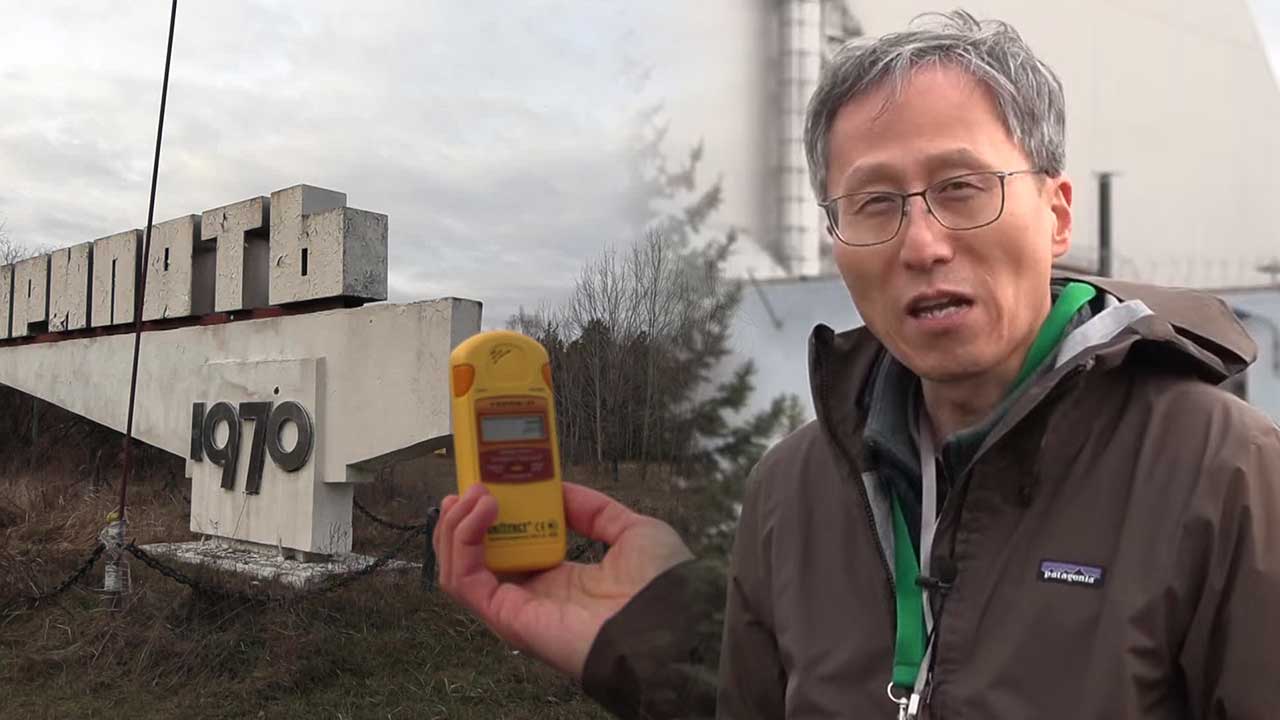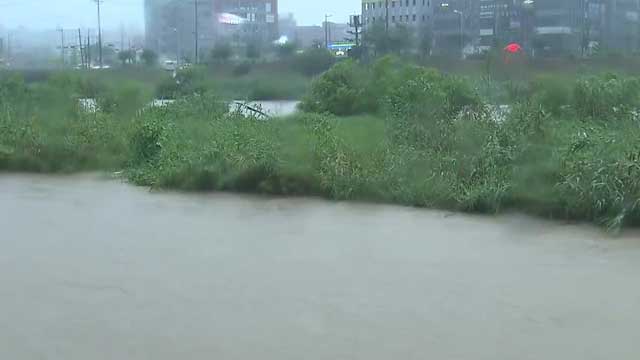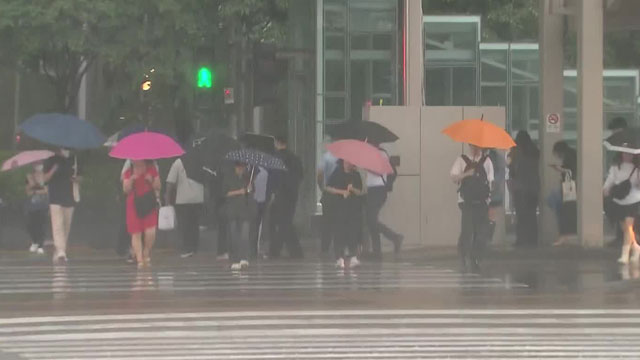Unstable radiation levels in Chernobyl presume Russian forces radiation exposure
입력 2024.12.22 (00:42)
읽어주기 기능은 크롬기반의
브라우저에서만 사용하실 수 있습니다.
[Anchor]
Chernobyl in Ukraine, where a nuclear accident has occurred in the past.
Located north of the capital Kyiv, it was a route used by Russian forces during the early stages of the war.
At that time, many assessments indicated that the Russian military had damaged the radiation control areas, making it more dangerous. What is the situation now?
Our reporter Kim Cheol-young has investigated on-site.
[Report]
Chernobyl, which was controlled by Russian forces at the beginning of the war, is now under Ukrainian control, but tensions remain high.
In preparation for the possibility of a renewed Russian incursion, the Ukrainian military has increased the number of bunkers and deployed heavily armed soldiers.
While filming military bases is not allowed, the massive communication interception tower built during the Soviet era symbolizes the tense situation.
The nuclear reactor number 4, which exploded 38 years ago, is surrounded by a massive dome-shaped sarcophagus, layered multiple times for safety.
[Hamenka/Chernobyl Nuclear Power Plant Official: "All nuclear fuel has been removed from the reactor and is being stored in a safe location."]
However, the radiation levels in the area remain unstable.
The standard set by the International Atomic Energy Agency (IAEA) and the plant is 0.3 microsieverts.
On the right side of the plant, normal levels are recorded.
However, on the left side, which faces the wind, levels exceed five times the standard.
The plant officials explain that radiation levels vary depending on the weather and wind direction.
Currently, the radiation level is 1.6 microsieverts, significantly exceeding the normal level of 0.3 microsieverts.
During the occupation of Chernobyl, Russian forces also entered the "Red Forest," an area highly contaminated with radiation, and it is presumed that many were exposed to radiation.
The Russian military also damaged data accumulated since the nuclear accident.
[Sergey Kiriev/Director of Chernobyl Environmental Center: "After regaining control of the plant, we began restoring the radiation measurement and control systems, which were all destroyed."]
The nuclear accident in 1986 turned Chernobyl into a site of human catastrophe, and is now added with the scars of war.
This is Kim Cheol-young reporting from Chernobyl, Ukraine for KBS News.
Chernobyl in Ukraine, where a nuclear accident has occurred in the past.
Located north of the capital Kyiv, it was a route used by Russian forces during the early stages of the war.
At that time, many assessments indicated that the Russian military had damaged the radiation control areas, making it more dangerous. What is the situation now?
Our reporter Kim Cheol-young has investigated on-site.
[Report]
Chernobyl, which was controlled by Russian forces at the beginning of the war, is now under Ukrainian control, but tensions remain high.
In preparation for the possibility of a renewed Russian incursion, the Ukrainian military has increased the number of bunkers and deployed heavily armed soldiers.
While filming military bases is not allowed, the massive communication interception tower built during the Soviet era symbolizes the tense situation.
The nuclear reactor number 4, which exploded 38 years ago, is surrounded by a massive dome-shaped sarcophagus, layered multiple times for safety.
[Hamenka/Chernobyl Nuclear Power Plant Official: "All nuclear fuel has been removed from the reactor and is being stored in a safe location."]
However, the radiation levels in the area remain unstable.
The standard set by the International Atomic Energy Agency (IAEA) and the plant is 0.3 microsieverts.
On the right side of the plant, normal levels are recorded.
However, on the left side, which faces the wind, levels exceed five times the standard.
The plant officials explain that radiation levels vary depending on the weather and wind direction.
Currently, the radiation level is 1.6 microsieverts, significantly exceeding the normal level of 0.3 microsieverts.
During the occupation of Chernobyl, Russian forces also entered the "Red Forest," an area highly contaminated with radiation, and it is presumed that many were exposed to radiation.
The Russian military also damaged data accumulated since the nuclear accident.
[Sergey Kiriev/Director of Chernobyl Environmental Center: "After regaining control of the plant, we began restoring the radiation measurement and control systems, which were all destroyed."]
The nuclear accident in 1986 turned Chernobyl into a site of human catastrophe, and is now added with the scars of war.
This is Kim Cheol-young reporting from Chernobyl, Ukraine for KBS News.
■ 제보하기
▷ 카카오톡 : 'KBS제보' 검색, 채널 추가
▷ 전화 : 02-781-1234, 4444
▷ 이메일 : kbs1234@kbs.co.kr
▷ 유튜브, 네이버, 카카오에서도 KBS뉴스를 구독해주세요!
- Unstable radiation levels in Chernobyl presume Russian forces radiation exposure
-
- 입력 2024-12-22 00:42:41

[Anchor]
Chernobyl in Ukraine, where a nuclear accident has occurred in the past.
Located north of the capital Kyiv, it was a route used by Russian forces during the early stages of the war.
At that time, many assessments indicated that the Russian military had damaged the radiation control areas, making it more dangerous. What is the situation now?
Our reporter Kim Cheol-young has investigated on-site.
[Report]
Chernobyl, which was controlled by Russian forces at the beginning of the war, is now under Ukrainian control, but tensions remain high.
In preparation for the possibility of a renewed Russian incursion, the Ukrainian military has increased the number of bunkers and deployed heavily armed soldiers.
While filming military bases is not allowed, the massive communication interception tower built during the Soviet era symbolizes the tense situation.
The nuclear reactor number 4, which exploded 38 years ago, is surrounded by a massive dome-shaped sarcophagus, layered multiple times for safety.
[Hamenka/Chernobyl Nuclear Power Plant Official: "All nuclear fuel has been removed from the reactor and is being stored in a safe location."]
However, the radiation levels in the area remain unstable.
The standard set by the International Atomic Energy Agency (IAEA) and the plant is 0.3 microsieverts.
On the right side of the plant, normal levels are recorded.
However, on the left side, which faces the wind, levels exceed five times the standard.
The plant officials explain that radiation levels vary depending on the weather and wind direction.
Currently, the radiation level is 1.6 microsieverts, significantly exceeding the normal level of 0.3 microsieverts.
During the occupation of Chernobyl, Russian forces also entered the "Red Forest," an area highly contaminated with radiation, and it is presumed that many were exposed to radiation.
The Russian military also damaged data accumulated since the nuclear accident.
[Sergey Kiriev/Director of Chernobyl Environmental Center: "After regaining control of the plant, we began restoring the radiation measurement and control systems, which were all destroyed."]
The nuclear accident in 1986 turned Chernobyl into a site of human catastrophe, and is now added with the scars of war.
This is Kim Cheol-young reporting from Chernobyl, Ukraine for KBS News.
Chernobyl in Ukraine, where a nuclear accident has occurred in the past.
Located north of the capital Kyiv, it was a route used by Russian forces during the early stages of the war.
At that time, many assessments indicated that the Russian military had damaged the radiation control areas, making it more dangerous. What is the situation now?
Our reporter Kim Cheol-young has investigated on-site.
[Report]
Chernobyl, which was controlled by Russian forces at the beginning of the war, is now under Ukrainian control, but tensions remain high.
In preparation for the possibility of a renewed Russian incursion, the Ukrainian military has increased the number of bunkers and deployed heavily armed soldiers.
While filming military bases is not allowed, the massive communication interception tower built during the Soviet era symbolizes the tense situation.
The nuclear reactor number 4, which exploded 38 years ago, is surrounded by a massive dome-shaped sarcophagus, layered multiple times for safety.
[Hamenka/Chernobyl Nuclear Power Plant Official: "All nuclear fuel has been removed from the reactor and is being stored in a safe location."]
However, the radiation levels in the area remain unstable.
The standard set by the International Atomic Energy Agency (IAEA) and the plant is 0.3 microsieverts.
On the right side of the plant, normal levels are recorded.
However, on the left side, which faces the wind, levels exceed five times the standard.
The plant officials explain that radiation levels vary depending on the weather and wind direction.
Currently, the radiation level is 1.6 microsieverts, significantly exceeding the normal level of 0.3 microsieverts.
During the occupation of Chernobyl, Russian forces also entered the "Red Forest," an area highly contaminated with radiation, and it is presumed that many were exposed to radiation.
The Russian military also damaged data accumulated since the nuclear accident.
[Sergey Kiriev/Director of Chernobyl Environmental Center: "After regaining control of the plant, we began restoring the radiation measurement and control systems, which were all destroyed."]
The nuclear accident in 1986 turned Chernobyl into a site of human catastrophe, and is now added with the scars of war.
This is Kim Cheol-young reporting from Chernobyl, Ukraine for KBS News.
-
-

금철영 기자 cykum@kbs.co.kr
금철영 기자의 기사 모음
-
이 기사가 좋으셨다면
-
좋아요
0
-
응원해요
0
-
후속 원해요
0











![[제보] 충남에 시간당 100㎜ <br>물 폭탄…비 피해 잇따라](/data/fckeditor/vod/2025/07/17/305901752740988696.png)

![[단독] “김건희 집사가 투자 검토 요청”…180억 투자사들 소환 임박](/data/news/2025/07/16/20250716_uOGzrO.png)

이 기사에 대한 의견을 남겨주세요.